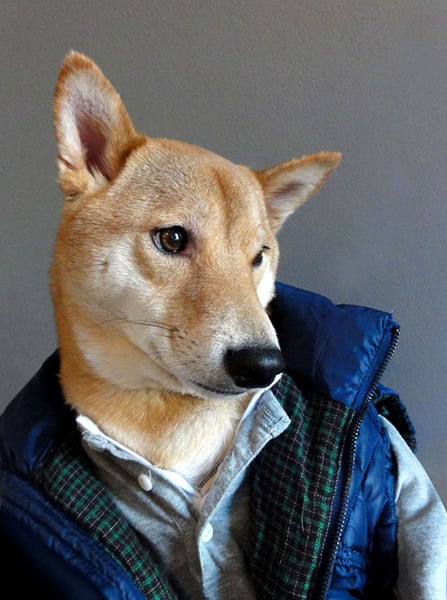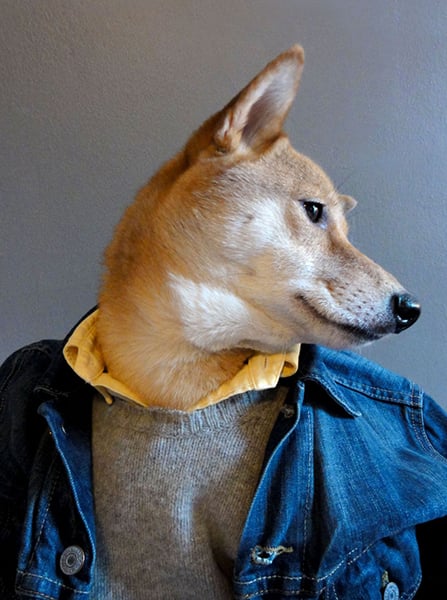 I grew up wearing second-hand clothes. And hating it. Shopping was always ritual in humiliation. The psychology of used clothing, at least when you’re in high school, is all about branding. If I could buy a brand that was popular enough, Goodwill would always outdo Wal-Mart.
I grew up wearing second-hand clothes. And hating it. Shopping was always ritual in humiliation. The psychology of used clothing, at least when you’re in high school, is all about branding. If I could buy a brand that was popular enough, Goodwill would always outdo Wal-Mart.
When I didn’t find the right brand, when the cool clothes just weren’t there or didn’t fit, I’d go for the obscure names and console myself with the conviction that my obscure threads were actually cooler than cool. I suppose I was a hipster in the 1990’s. When I discovered specialty consignment stores and the crunchy, granola-ish — the term today would be ‘vintage’ — weirdo stores, I began to gain confidence in my fashion options. I also realized that, most of the time, formality dignifies poverty. A collar neatly tucked into khakis with leather shoes, could at least look respectable next to the latest Nikes and Abercrombie.
 To this day my sense of fashion tends to be a little dated. A friend of mine once told me that my aesthetic was O.N. — Old Negro. This made sense since I later discovered discount clothes stores where I could buy cheap new suits and matching shirts and ties and kerchiefs, and even shoes if I wanted them, all primarily sold to the Black Church community. Plus, I wear lots of clothes I’ve inherited from my late abuelito Rocha and my wife’s two deceased grandfathers; it’s good clothes and has plenty of verve.
To this day my sense of fashion tends to be a little dated. A friend of mine once told me that my aesthetic was O.N. — Old Negro. This made sense since I later discovered discount clothes stores where I could buy cheap new suits and matching shirts and ties and kerchiefs, and even shoes if I wanted them, all primarily sold to the Black Church community. Plus, I wear lots of clothes I’ve inherited from my late abuelito Rocha and my wife’s two deceased grandfathers; it’s good clothes and has plenty of verve.
Today I prefer shopping at thrift stores. Cliché as it is, I’m beginning to cherish the poverty of my childhood and adolescence. It taught me more than I could have realized then. A funky rack of pants assorted by color and the mothball aroma of crusty tweed blazers has now become a consoling perfume. New retailers smell like nothing to me: sterile and void, kin to the contrast in scents of new and used bookstores.
I no longer shop for clothes out of fear. I am not ashamed anymore.
 I look for quality now, not just branding. A Brooks Brothers label doesn’t mean it’s worth it, even for seven or thirteen bucks. Among identical brands there are better and worse fabrics, cuts, and construction, made in different places of the world: all possible markers of cheap popularity or quality design and execution. I continue to rely on branding for my initial selection — almost all my dress shirts today are Brooks Brothers — but the brand is only a starting point.
I look for quality now, not just branding. A Brooks Brothers label doesn’t mean it’s worth it, even for seven or thirteen bucks. Among identical brands there are better and worse fabrics, cuts, and construction, made in different places of the world: all possible markers of cheap popularity or quality design and execution. I continue to rely on branding for my initial selection — almost all my dress shirts today are Brooks Brothers — but the brand is only a starting point.
I realize, now, that the zenith of quality clothing is privately tailored, unmarked custom clothes. The wardrobe of my dreams will boast a few fine items made by a classic, but slightly fashion forward, tailor. Unlabeled. The greatest sign of fashion is in the brand put under erasure. The path to righteousness is pure negation.
An apophatic clothing ensemble, that’s what dreams are made of.
The irony is that my mother would sometimes sew a button-down shirt for me, and made outfits for herself and my sisters. Today, it seems, my dream is a romantic desire for the thing I already had as a boy.
Hopeful nostalgia for the present.












